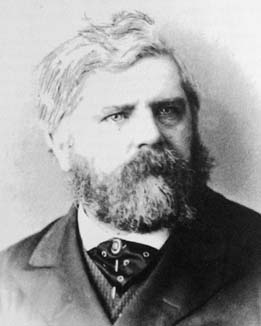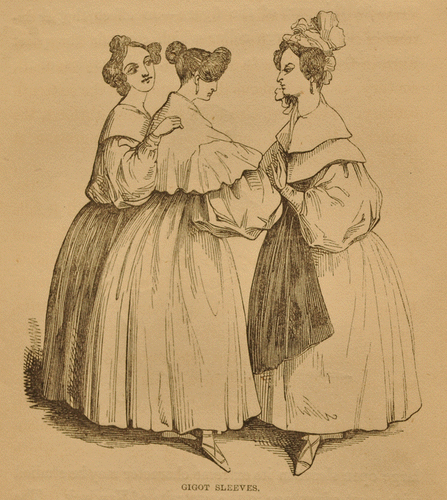|
Charles Merrifield
Charles Watkins Merrifield FRS (20 October 1827 – 1 January 1884, Hove) was a British mathematician. For the British Association's Section of Mechanical Science, he was in 1875 the Section's Vice-President at the Brighton meeting and then in 1876 the Section's President at the Glasgow meeting. He served on the British Association's committee given the task of reporting on Charles Babbage’s analytical machine. For the London Mathematical Society, he served as Vice-President in 1876–1878, as President in 1878–1880, and as Treasurer in 1880–1882. Charles was the eldest son of the author and artist Mary Philadelphia Merrifield and brother of the barrister Frederick Merrifield. His nieces were the classical scholar Margaret Verrall (nee Merrifield) and suffrage campaigner Flora Merrifield. Selected publications * * References {{DEFAULTSORT:Merrifield, Charles Watkins 19th-century English mathematicians 1827 births 1884 deaths Fellows of the Royal Society Pr ... [...More Info...] [...Related Items...] OR: [Wikipedia] [Google] [Baidu] |
Fellow Of The Royal Society
Fellowship of the Royal Society (FRS, ForMemRS and HonFRS) is an award granted by the Fellows of the Royal Society of London to individuals who have made a "substantial contribution to the improvement of natural science, natural knowledge, including mathematics, engineering science, and medical science". Overview Fellowship of the Society, the oldest known scientific academy in continuous existence, is a significant honour. It has been awarded to :Fellows of the Royal Society, around 8,000 fellows, including eminent scientists Isaac Newton (1672), Benjamin Franklin (1756), Charles Babbage (1816), Michael Faraday (1824), Charles Darwin (1839), Ernest Rutherford (1903), Srinivasa Ramanujan (1918), Jagadish Chandra Bose (1920), Albert Einstein (1921), Paul Dirac (1930), Subrahmanyan Chandrasekhar (1944), Prasanta Chandra Mahalanobis (1945), Dorothy Hodgkin (1947), Alan Turing (1951), Lise Meitner (1955), Satyendra Nath Bose (1958), and Francis Crick (1959). More recently, fellow ... [...More Info...] [...Related Items...] OR: [Wikipedia] [Google] [Baidu] |
Hove
Hove ( ) is a seaside resort in East Sussex, England. Alongside Brighton, it is one of the two main parts of the city of Brighton and Hove. Originally a fishing village surrounded by open farmland, it grew rapidly in the 19th century in response to the development of its eastern neighbour Brighton; by the Victorian era it was a fully developed town with borough status. Neighbouring parishes such as Aldrington and Hangleton were annexed in the late 19th and early 20th centuries. The neighbouring urban district of Portslade was merged with Hove in 1974. In 1997, as part of local government reform, the borough merged with Brighton to form the Borough of Brighton and Hove; this unitary authority was granted city status in 2000. Name and etymology Old spellings of Hove include Hou (Domesday Book, 1086), la Houue (1288), Huua (13th century), Houve (13th and 14th centuries), Huve (14th and 15th centuries), Hova (16th century) and Hoova (1675). The etymology was disputed at length ... [...More Info...] [...Related Items...] OR: [Wikipedia] [Google] [Baidu] |
British Association
The British Science Association (BSA) is a charity and learned society founded in 1831 to aid in the promotion and development of science. Until 2009 it was known as the British Association for the Advancement of Science (BA). The current Chief Executive is Hannah Russell. The BSA's mission is to get more people engaged in the field of science by coordinating, delivering, and overseeing different projects that are suited to achieve these goals. The BSA "envisions a society in which a diverse group of people can learn and apply the sciences in which they learn." and is managed by a professional staff located at their Head Office in the Wellcome Wolfson Building. The BSA offers a wide variety of activities and events that both recognise and encourage people to be involved in science. These include the British Science Festival, British Science Week, the CREST Awards, For Thought, The Ideas Fund, along with regional and local events. History Foundation The Association was founded ... [...More Info...] [...Related Items...] OR: [Wikipedia] [Google] [Baidu] |
London Mathematical Society
The London Mathematical Society (LMS) is one of the United Kingdom's Learned society, learned societies for mathematics (the others being the Royal Statistical Society (RSS), the Institute of Mathematics and its Applications (IMA), the Edinburgh Mathematical Society and the Operational Research Society (ORS). History The Society was established on 16 January 1865, the first president being Augustus De Morgan. The earliest meetings were held in University College London, University College, but the Society soon moved into Burlington House, Piccadilly. The initial activities of the Society included talks and publication of a journal. The LMS was used as a model for the establishment of the American Mathematical Society in 1888. Mary Cartwright was the first woman to be President of the LMS (in 1961–62). The Society was granted a royal charter in 1965, a century after its foundation. In 1998 the Society moved from rooms in Burlington House into De Morgan House (named after t ... [...More Info...] [...Related Items...] OR: [Wikipedia] [Google] [Baidu] |
Mary Philadelphia Merrifield
Mary Philadelphia Merrifield (née Watkins; 15 April 1804 – 4 January 1889) was a British writer on art and fashion. She later became an algologist (an expert on seaweed). Life She was born Mary Philadelphia Watkins in Brompton, London in 1804. Her father, Sir Charles Watkins, was a barrister who specialised in transferring property ownership. In 1826/7, she married John Merrifield and gave birth in 1827 to a son, Charles Watkins Merrifield, and a second son Frederick Merrifield in 1831.Adrian Rice, 'Merrifield, Charles Watkins (1827–1884)', ''Oxford Dictionary of National Biography'', Oxford University Press, 2004; online edn, Jan 201accessed 8 Nov 2015/ref> They later moved to Dorset Gardens, Brighton. Her husband worked as a barrister and she undertook the translation of a book on painting by the 15th-century artist Cennino Cennini. The book, ''Treatise of Painting'', was published in 1844. [...More Info...] [...Related Items...] OR: [Wikipedia] [Google] [Baidu] |
Frederick Merrifield
Frederick Merrifield (1831 – 28 May 1924, Brighton) was an English barrister, entomologist and campaigner for women's suffrage. Merrifield was a London attorney and clerk to the County Council of East Sussex. An expert on Lepidoptera, he was especially interested in the effect of temperature on the colour and patterning of butterflies, rearing larvae and pupae in controlled temperature incubators and recording the effect on the colouration of adults. Examples of his very many scientific papers on this subject are (1890). Systematic temperature experiments on some Lepidoptera in all their stages. ''Trans. Entomol. Soc. London'', 131-59 and (1891). Conspicuous effects on the markings and colouring of Lepidoptera caused by exposure of the pupae to different temperature conditions. ''Trans. Entomol. Soc. London'', 155-67. He was President of the Royal Entomological Society (1905-1906). Frederick was a Liberal and attended meetings of the Reform League that campaigned for better ' ... [...More Info...] [...Related Items...] OR: [Wikipedia] [Google] [Baidu] |
Margaret Verrall
Margaret de Gaudrion Verrall (née Merrifield; 21 December 1857 – 2 July 1916) was a classical scholar and lecturer at Newnham College, Cambridge. Much of her life and research was concerned with the study of parapsychology, mainly in order to examine how psychic abilities might demonstrate the abilities, breadth and power of the human mind. She began to exhibit and develop psychic abilities herself around 1901, and became both a recipient and analyst of many cross-correspondences produced by psychics, most notably the Palm Sunday scripts. Life Born Margaret de Gaudrion Merrifield at 4 Dorset Gardens, Brighton in 1857, she was the eldest of two daughters born to Frederick Merrifield (1831-1924) and Maria Angélique de Gaudrion (1824/5–1894). Her father was a clerk to the County Councils of East and West Sussex. Her mother was of French origin and the daughter of Colonel V.P.J. de Gaudrion, said to be from an old French family. She entered Newnham College (then Hall) in ... [...More Info...] [...Related Items...] OR: [Wikipedia] [Google] [Baidu] |
Flora Merrifield
Flora (de Gaudrion) Merrifield (1859–1943, Brighton) was a leading British suffragist in Brighton who campaigned for the Women's suffrage, women's right to vote. Family Flora was the granddaughter of artist and author Mary Philadelphia Merrifield and the daughter of barrister, Frederick Merrifield and his wife Maria Merrifield (née de Gaudrion). As child, Flora lived with her parents and elder sister at 48 Park Crescent in Brighton. Flora's sister later became a classical scholar Margaret Verrall, Margaret de Gaudrion Verrall (née Merrifield), while her uncle was the mathematician, Charles Watkins Merrifield. As a young woman, Flora was present at the opening of the Brighton School of Art, of which her father was Chair, and presented Princess Louise, Duchess of Argyll with a programme drawn up the students. Suffrage campaigning Flora's parents were active members of the Brighton committee of the National Society for Women's Suffrage, along with Henry Fawcett and Millicen ... [...More Info...] [...Related Items...] OR: [Wikipedia] [Google] [Baidu] |
19th-century English Mathematicians
The 19th century began on 1 January 1801 (represented by the Roman numerals MDCCCI), and ended on 31 December 1900 (MCM). It was the 9th century of the 2nd millennium. It was characterized by vast social upheaval. Slavery was abolished in much of Europe and the Americas. The First Industrial Revolution, though it began in the late 18th century, expanded beyond its British homeland for the first time during the 19th century, particularly remaking the economies and societies of the Low Countries, France, the Rhineland, Northern Italy, and the Northeastern United States. A few decades later, the Second Industrial Revolution led to ever more massive urbanization and much higher levels of productivity, profit, and prosperity, a pattern that continued into the 20th century. The Catholic Church, in response to the growing influence and power of modernism, secularism and materialism, formed the First Vatican Council in the late 19th century to deal with such problems and confi ... [...More Info...] [...Related Items...] OR: [Wikipedia] [Google] [Baidu] |
1827 Births
Events January–March * January 5 – The first regatta in Australia is held, taking place in Tasmania (called at the time ''Van Diemen's Land''), on the River Derwent at Hobart. * January 15 – Furman University, founded in 1826, begins its first classes with 10 students, as the Furman Academy and Theological Institution, located in Edgefield, South Carolina. By the end of 2016, it will have 2,800 students at its main campus in Greenville, South Carolina. * January 27 – Author Johann Wolfgang von Goethe first elaborates on his vision of '' Weltliteratur'' (world literature), in a letter to Johann Peter Eckermann, declaring his belief that "poetry is the universal possession of mankind", and that "the epoch of world literature is at hand, and each must work to hasten its coming." * January 30 – The first public theatre in Norway, the Christiania Offentlige Theater, is inaugurated in Christiania (modern-day Oslo). * January – In Laos, King Anouvong of Vien ... [...More Info...] [...Related Items...] OR: [Wikipedia] [Google] [Baidu] |
1884 Deaths
Events January * January 4 – The Fabian Society is founded in London to promote gradualist social progress. * January 5 – Gilbert and Sullivan's comic opera ''Princess Ida'', a satire on feminism, premières at the Savoy Theatre, London. * January 7 – German microbiologist Robert Koch isolates ''Vibrio cholerae'', the cholera bacillus, working in India. * January 18 – William Price (physician), William Price attempts to cremate his dead baby son, Iesu Grist, in Wales. Later tried and acquitted on the grounds that cremation is not contrary to English law, he is thus able to carry out the ceremony (the first in the United Kingdom in modern times) on March 14, setting a legal precedent. * January – Arthur Conan Doyle's anonymous story "J. Habakuk Jephson's Statement" appears in the ''Cornhill Magazine'' (London). Based on the disappearance of the crew of the ''Mary Celeste'' in 1872, many of the fictional elements introduced by Doyle come to repla ... [...More Info...] [...Related Items...] OR: [Wikipedia] [Google] [Baidu] |







